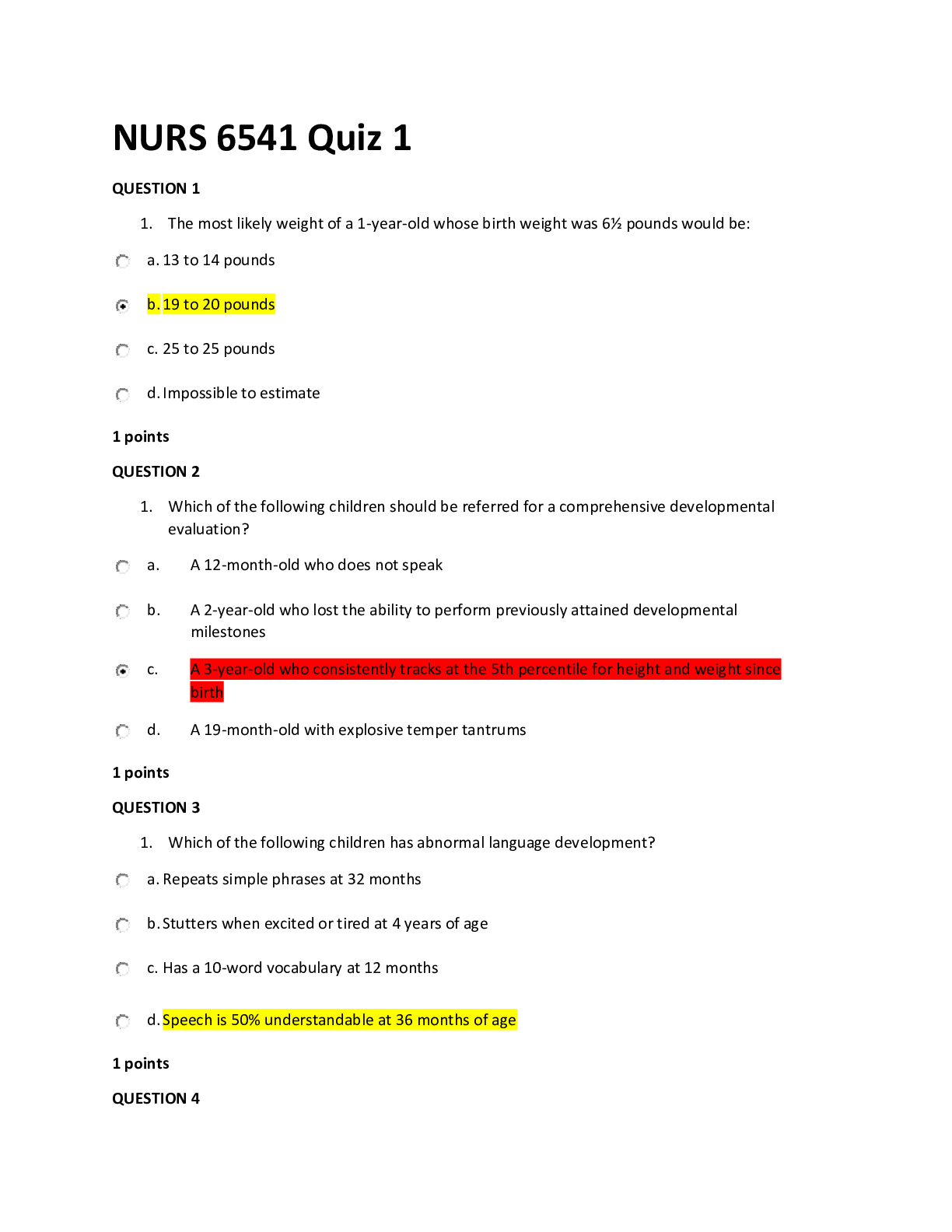SCIENCE 101 > QUESTIONS & ANSWERS > ATI TEAS PRACTICE TEST (All)
ATI TEAS PRACTICE TEST
Document Content and Description Below
The first four steps of the scientific method are as follows: I. Identify the problem II. Ask questions III. Develop a hypothesis IV. Collect data & experiment on that data *Which of the followin... g is the next step in the scientific method? A) Observe the data B) Analyze the results C) Measure the data D) Develop a conclusion What are the two types of measurement important in science? A) Quantitative & Numerical B) Qualitative & Descriptive C) Numerical & Scientific D) Quantitative & Qualitative What is the name of the structure that prevents food from entering the airway? A) Trachea B) Esophagus C) Diaphragm D) Epiglottis D) Epiglottis Which substance makes up the pads that provide support between the vertebrae? A) Bone B) Cartilage C) Tendon D) Fat How many organ systems are in the human body? A) 12 B) 15 C) 9 D) 11 Which element within the respiratory system is responsible for removing foreign matter from the lungs? A) Bronchial tubes B) Cilia C) Trachea D) Alveoli Organized from high to low, the hierarchy of the human body's structure is as follows: Organism, Organ Systems, Organs, Tissues: Which of the following comes next? This study source was downloaded by 100000827141222 from CourseHero.com on 07-13-2022 07:50:43 GMT -05:00 https://www.coursehero.com/file/36464053/ATI-TEAS-PRACTICE-TESTdocx/ A) Molecules B) Atoms C) Cells D) Muscle What is the name of the process in the lungs by which oxygen is transported from the air to the blood? A) Osmosis B) Diffusion C) Dissipation D) Reverse Osmosis Which section of the digestive system is responsible for water reabsorption? A) The Large Intestine B) The duodenum C) The Small Intestine D) The Gallbladder Which of the following best describes the relationship between the circulatory system and the integumentary system? A) Removal of excess heat from body B) Hormonal influence on blood pressure C) Regulation of blood's pressure & volume D) Development of blood cells within marrow Once blood has been oxygenated, it travels through the pulmonary veins, through the left atrium, & then through the ___ [Show More]
Last updated: 2 years ago
Preview 1 out of 9 pages

Buy this document to get the full access instantly
Instant Download Access after purchase
Buy NowInstant download
We Accept:

Reviews( 0 )
$7.50
Can't find what you want? Try our AI powered Search
Document information
Connected school, study & course
About the document
Uploaded On
Jul 13, 2022
Number of pages
9
Written in
Additional information
This document has been written for:
Uploaded
Jul 13, 2022
Downloads
0
Views
179













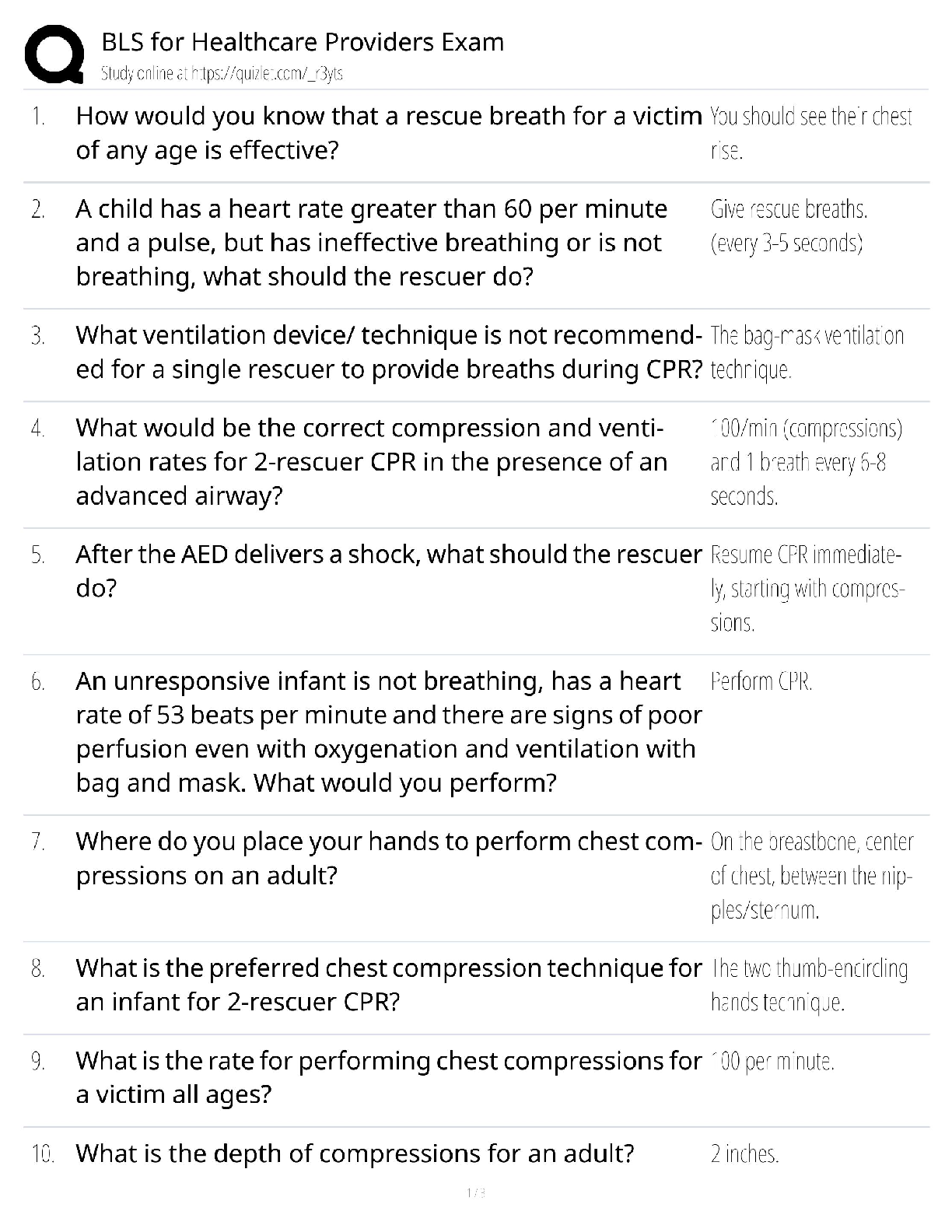

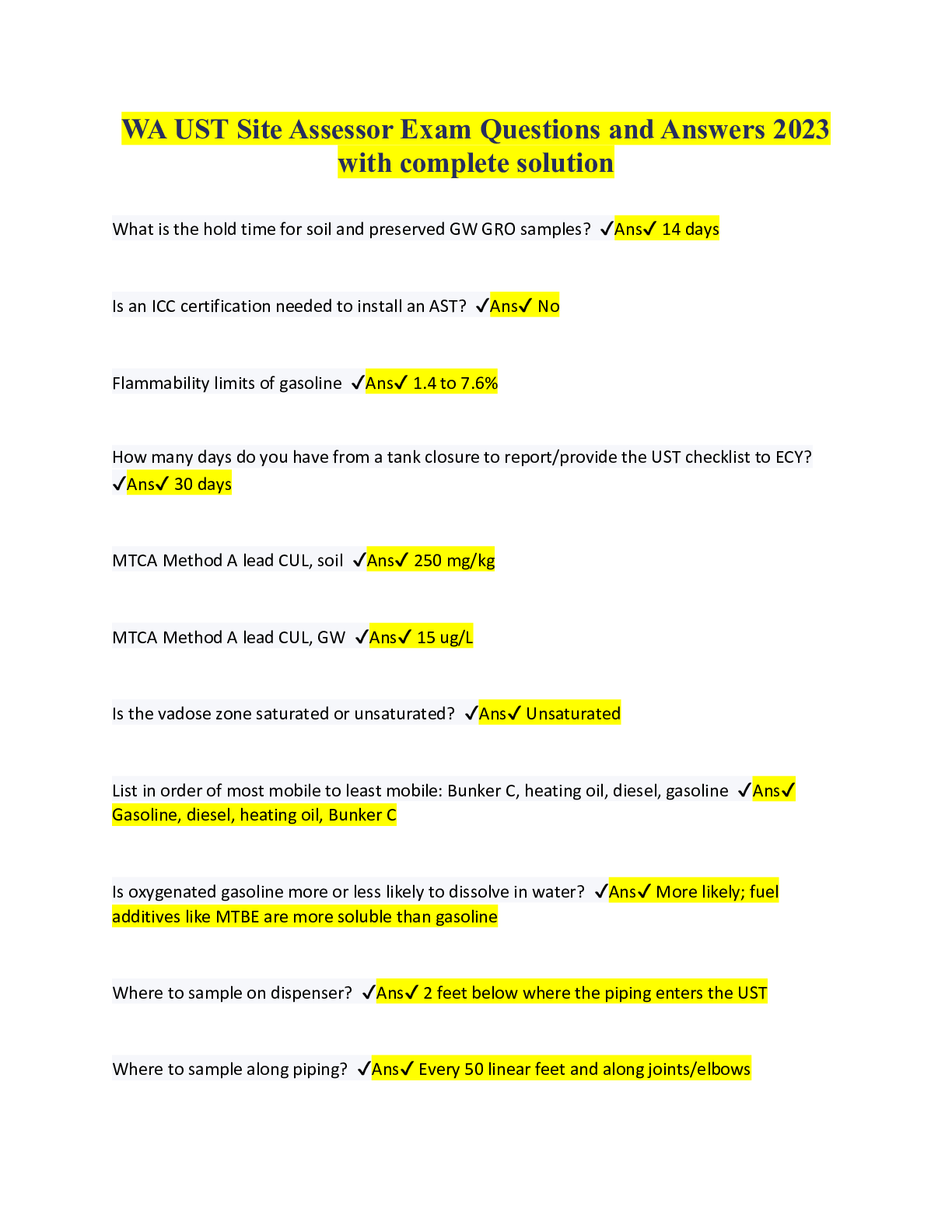

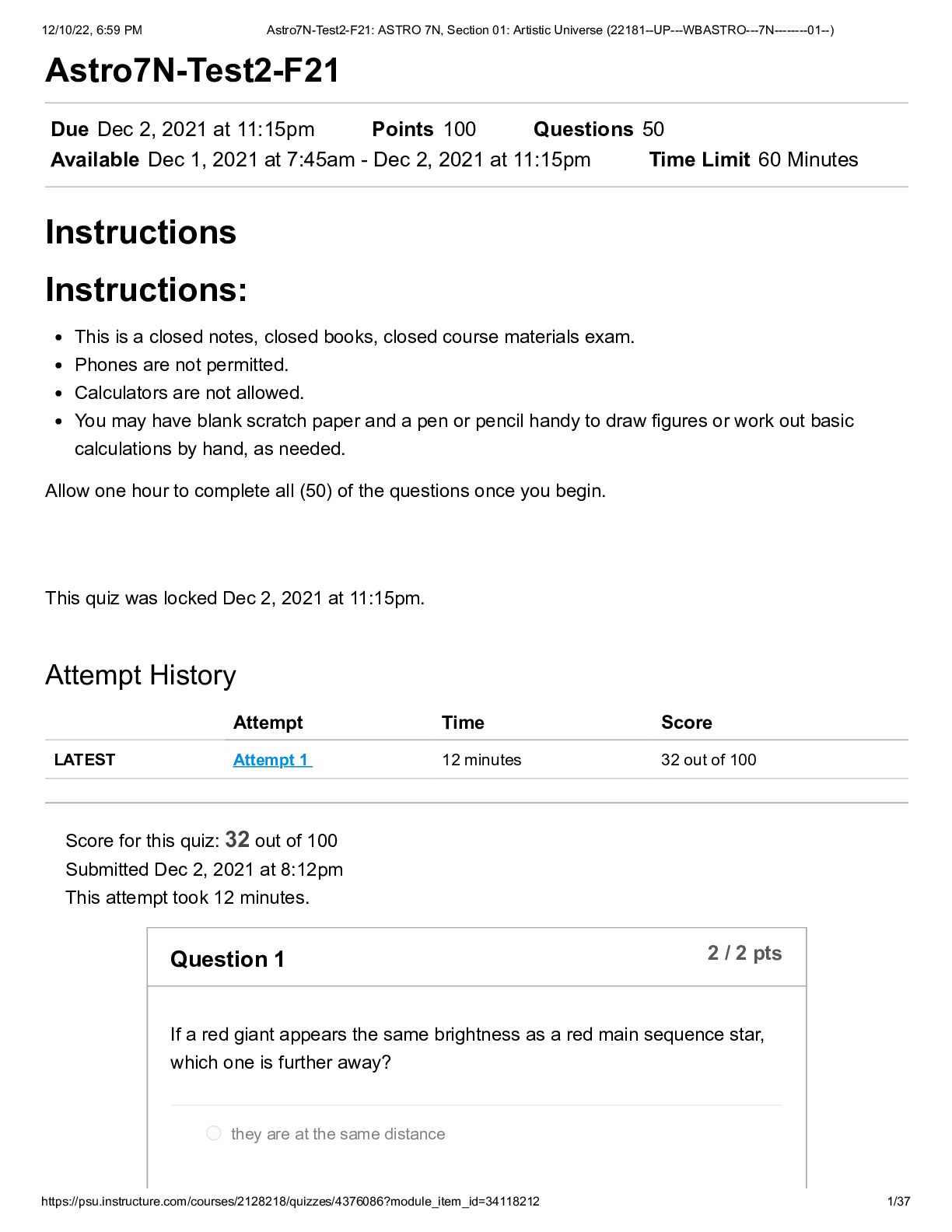

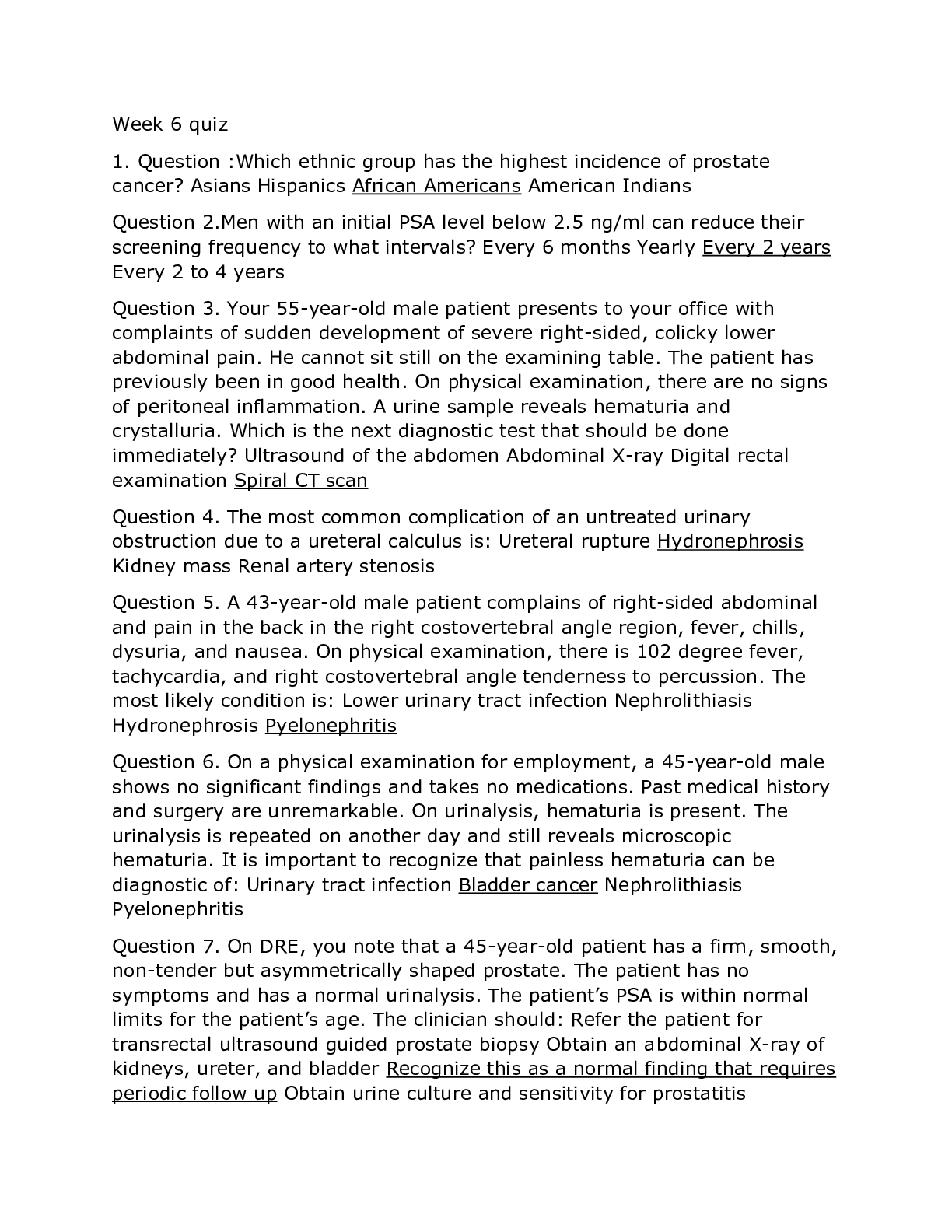
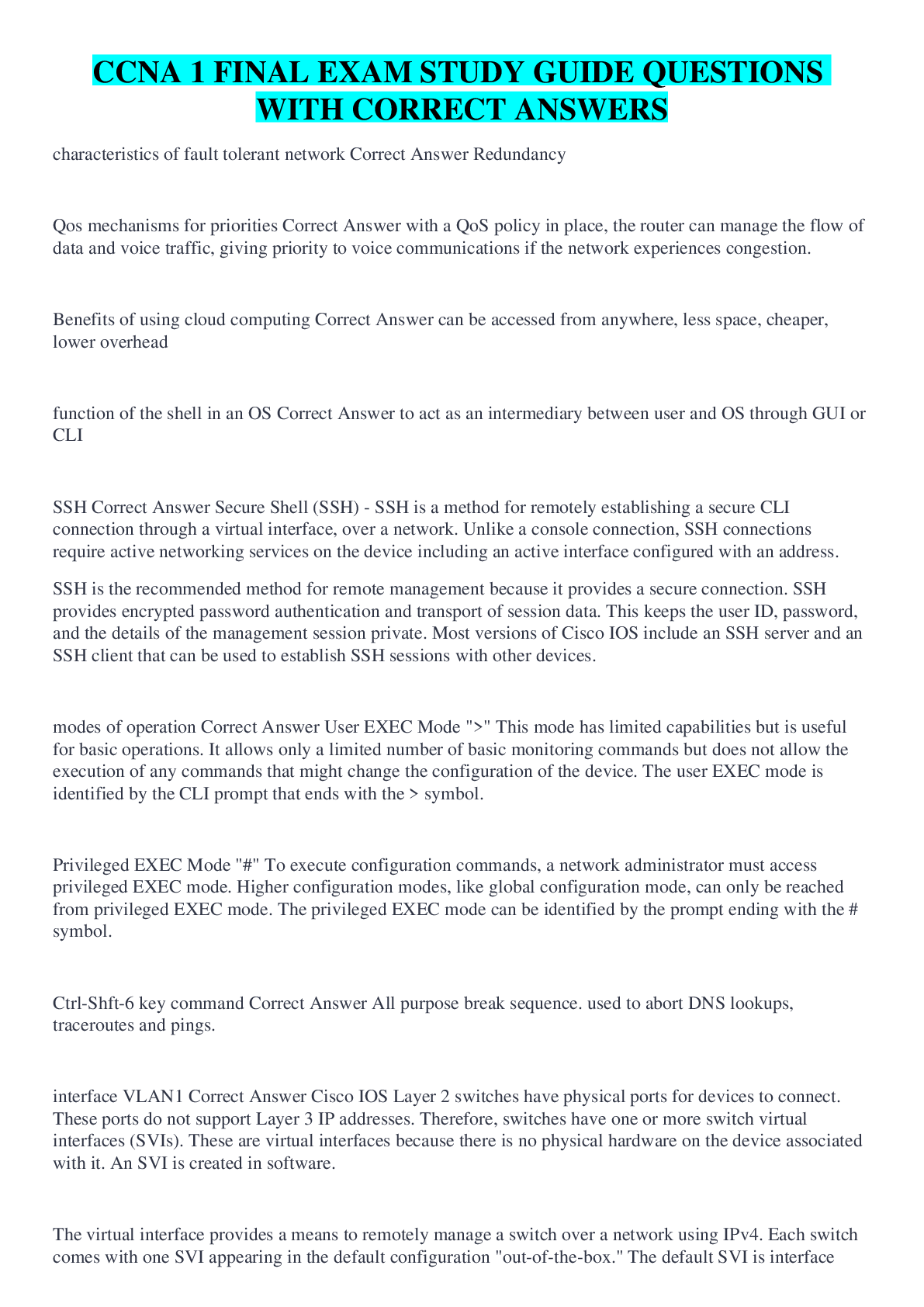
.png)
.png)
